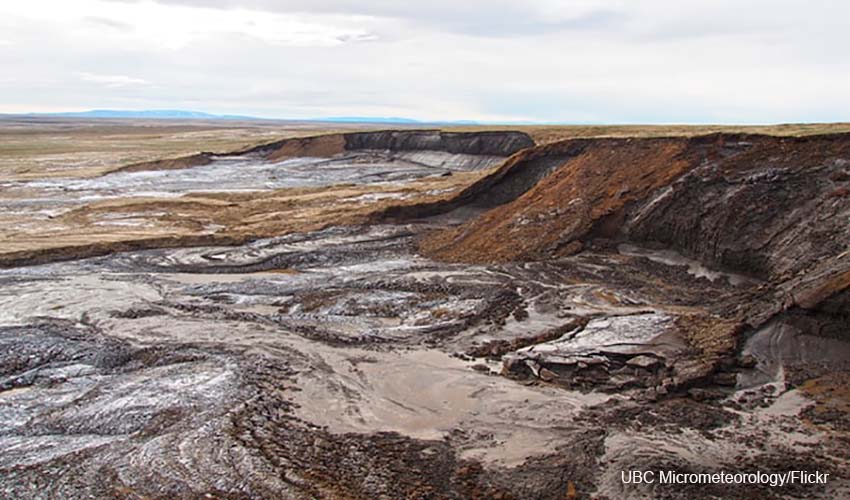FAQs about Permafrost

2. Are there frozen soils without ice?
Permafrost is a frozen soil with no ice, most of the time. These cold deserts have a thickness that varies from a few meters to several hundred meters deep, depending on the climate of the place. A permafrost soil has a low density of vegetation and extraordinarily little diversity, due to the poverty of existing nutrients, low humidity, and low rainfall. Examples of frozen ice-free soils are the tundra and taiga.
The tundra is made up of vast territories of frozen soils devoid of ice, a kind of cold, treeless plains. It is characterized by a subsoil covered with moss and lichens. It is mainly located in the boreal hemisphere, in northern Russia, Alaska, northern Canada, southern Greenland and on the arctic coast of Europe.
In the case of taiga, the ground can freeze during winter, but the summer months are warm enough for the surface to thaw, although the deeper parts remain frozen. The taiga is a biome characterized by coniferous forest formations, being the largest forest mass on the planet. It is located in northern Russia, including Siberia, northern Europe, in the Hudson Bay, northern Canada and Alaska. The southern hemisphere lacks taiga.
FAQS about Permafrost
1. What is permafrost and where is it located?
2. Are there frozen soils without ice?
3. What is the function of permafrost?
4. What dangers does permafrost pose?
5. Is Siberian permafrost thawing faster?
6. Is Russia the most vulnerable country due to permafrost?
7. What are the bacteria related to permafrost?
8. Can bacteria hibernating for millions of years in permafrost be activated?
9. Is there permafrost in the southern hemisphere?
10. What is the difference between the tundra and the taiga?
Other secctions of Permafrost
Article
Magazine
You can also see it in…
Infographics

Photo Gallery.

Video Gallery

